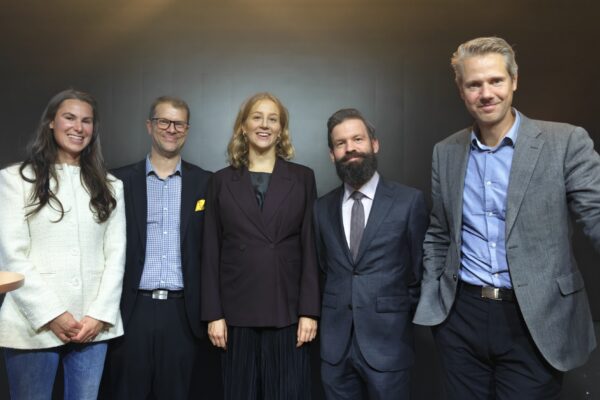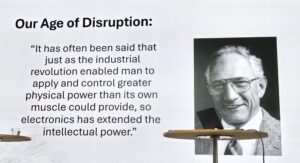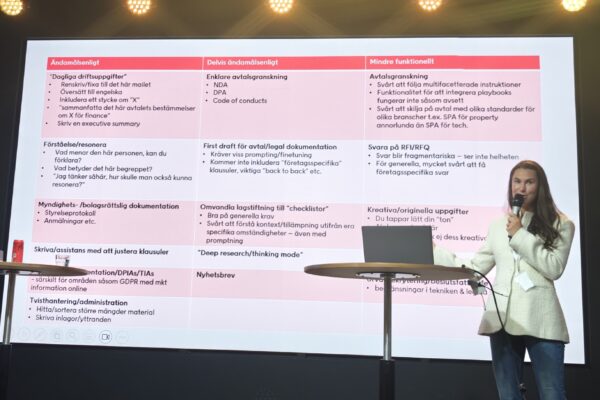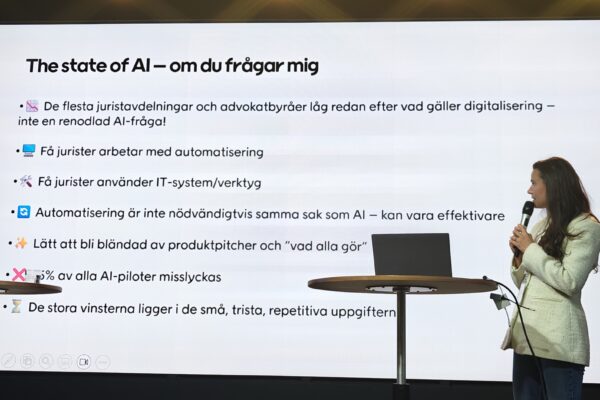Yesterday, the Legal Transformation Network (LTN) hosted a seminar in collaboration with the Swedish Company Lawyers Association, with Schibsted kindly serving as host. The topic – “A practical perspective on the rapid development of AI and its impact on the legal industry” – attracted great interest and was fully booked well in advance.

The session opened with an overview of the digital journey by Christian Sandström (Associate Professor at Jönköping International Business School, Associate Professor at Chalmers University of Technology and columnist Affärsvärlden); from digital information, to digital automation, and now into the era of digital intelligence. The central question remains: where is the legal industry heading? While interest in AI and digitalisation is undeniable, the actual extent of the profession’s transformation is still unclear. As Christian noted, perhaps the real focus should be on client value: delivering more for less. That may not come through one radical leap, but through billions of small steps that make legal services smarter and more efficient. The lowest-hanging fruit is often found in process automation.

Cecilia Lindström, General Counsel at Voyado, provided a detailed and refreshingly honest account of her hands-on experience with AI. Her message was clear: AI is not about replacing lawyers, but about supporting them. Much of what is happening today is better described as automation rather than “true AI.” She shared examples from numerous AI projects she has tested, with one striking insight: around 95% of these initiatives failed to deliver as expected.

A particularly notable finding concerned contract review tools. While AI solutions perform well with simple agreements such as NDAs and DPAs, they consistently fall short when handling more complex contracts. They struggle to follow multifaceted instructions and apply internal playbooks, and therefore remain less useful for contract review than many had hoped.

Still, this is not a story of disappointment. Cecilia highlighted several areas where AI tools already add tangible value: drafting emails, translating, summarising texts, clarifying unclear language, reasoning around concepts, and even supporting the writing of minutes, regulatory documentation, and other forms of more standardised drafting. In short, AI proves most effective not only in daily operational tasks that lawyers often find draining, but also in areas of standardised document production. That is where the practical gains lie today.
 One of the most thought-provoking insights came from a recent survey: participants judged answers from ChatGPT to be more trustworthy than those from a lawyer – even when they knew which response came from which source. For in-house lawyers, this should serve as a wake-up call.
One of the most thought-provoking insights came from a recent survey: participants judged answers from ChatGPT to be more trustworthy than those from a lawyer – even when they knew which response came from which source. For in-house lawyers, this should serve as a wake-up call.
Looking ahead, Cecilia envisioned a future where AI agents can automate multi-step tasks that today require human intervention. Reaching that point, however, demands significant groundwork: standardising data, refining processes, and rethinking workflows. It may not be glamorous, but it is essential for meaningful change.

One takeaway was clear: AI has not yet delivered on the grand promises of transformation or overnight disruption. Instead, progress is being made through small, practical improvements that, step by step, have the potential to reshape how legal work is done.

